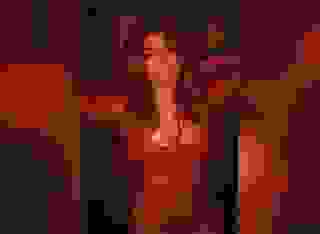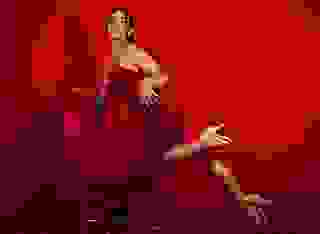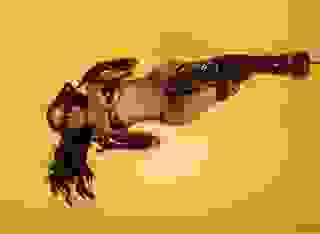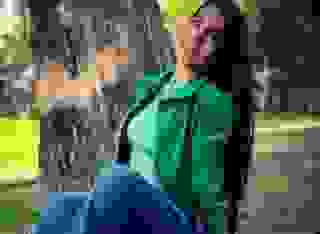- Reviews & Essays
- Mona Lisa's Eyebrows
Note: You can change font size, font face, and turn on dark mode by clicking the "A" icon tab in the Story Info Box.
You can temporarily switch back to a Classic Literotica® experience during our ongoing public Beta testing. Please consider leaving feedback on issues you experience or suggest improvements.
Click here
There you have it, Mona Lisa did have eyebrows. So we have learned that Leonardo da Vinci's portrait of a Florentine merchant's wife originally did show eyebrows, the subject of the portrait did not pluck them in some sixteenth century fashion statement and da Vinci didn't glamorize the woman by hiding the hair. This is only some of the new information supposedly uncovered by French engineer Pascal Cotte.
Cotte, who as a boy in the sixties, was fascinated with the Mona Lisa, spending hours simply staring at it the first time he saw the painting in the Louvre. Later in his life he used his training to develop a camera that uses light sensors to scan the painting and actually see what is beneath the layers of paint. Cotte indicates that the scans he made of the Mona Lisa actually reveal traces of eyebrows that were apparently obliterated by a restoration made a long, long time ago.
Wait a minute, this is not some nut sneaking out Polaroid photos of the painting and analyzing them. Cotte was given access to the painting in the Louvre's lab three years ago where he scanned it and subsequently spent over three thousand hours analyzing it. By using the sensors he detects light from the visible, as well as the ultraviolet and infrared ranges of the light spectrum which allows him to see beneath the layers of paint.
Not only has he revealed the eyebrows and eyelashes in the painting, something that had been a great curiosity for viewers and art experts alike, he has also made a number of other findings perhaps revealing some of da Vinci's earlier intentions for the painting. Apparently da Vinci changed his mind while working on the painting changing the position of two fingers on Mona Lisa's left hand.
Cotte also indicates that originally Mona Lisa's face was a bit wider, with a more expressive smile than the final product shows. Imagine that famous smile replaced with a shit-eating grin. You've got to wonder if da Vinci had not made the changes would there be a completely different painting hanging in the Mona Lisa's place in the Louvre? Apparently Mona Lisa was also originally holding a blanket that has apparently faded from view.
Cotte has assembled these findings together in an exhibit at the Metreon Centre in San Francisco where he shows the above discoveries along with twenty-one additional secrets about the painting that he has uncovered. Apparently her dress had a hint of lace to it and some currently visible blotches on her were actually varnish marks. He was even able to determine the original colors da Vinci used and has created a reproduction using some bright blues and whites in place of the faded and stained colors now visible.
Of course as the mysteries are unveiled you have got to ask yourself if we are losing anything by scraping too deeply into the art. In some cases we may be revealing some aspects that have been destroyed by age, improper handling or previous restoration attempts, but now we are able to chronicle the artist's initial rough drafts, his screw-ups, his compromises, and perhaps failures in the development of the masterpiece. While this may educate experts on the development of great are, are we demystifying the genius and undermining the art in exposing what the artist did not intend to expose?
Imagine digging even deeper into this and other pieces of art, perhaps we can uncover more. Who wouldn't like to get a peek at Mona Lisa's breasts? The original may have been a nude, think of what da Vinci could have done with her breasts, the same alluring artistry presenting a perfect nipple. Deep scan's of Rodin's famous sculpture "The Kiss" will reveal his original intention, "The Blow-job" or perhaps relocate "The Thinker"'s left hand and Rodin's sculpture becomes "The Masturbator." And then Rodin's "The Bather," well, no, we won't even imagine changing that one.
Certainly the perverse considerations above are profane but, as scientific methods and equipment continues to advance, will the great art of the world continue to be probed and exposed in the artistic equivalent of what I detailed in the preceding paragraph. While these advanced techniques can analyze the art without physically damaging the work, will the integrity of the masterpiece be degraded as images the artist did not intend to present become part of the work? Do we really need to know the 25 secrets of the Mona Lisa, or should the art simply stand as it presently exists? The art world and the world of science need to think about what they are truly accomplishing and what the repercussions their "discoveries" will have on art in general.
Sources
1. "Finally, one Mona Lisa mystery solved," Houston Chronicle, October 23, 2007, pg A2.
2. "Digital scans reveal Mona Lisa secrets," Guardian Limited, October 22, 2007 http://arts.guardian.co.uk/art/news/story/0,,2196892,00.html
3. "25 Secrets of Mona Lisa Revealed," Jeanna Bryner, Live Science, October 18, 2007 http://www.livescience.com/history/071018-mona-lisa.html
- COMMENTS
I saw the headline about this online. You have to wonder what the point was really. I mean, what purpose does this knowlege serve. Its interesting to know and all, and maybe gives us some insight into Leonardo's thought process as he painted or whatever. It just seems like alot of time and money that could be better spent on something that might actually do the world some good.
Interesting info — although it must have originally been a painting that fascinated the viewer as well, since the French king brought it back to France from Italy long before any restoration that you cite would have made the changes. Or perhaps DeVinci's reputation was such that it would have occupied an honored space regardless.
A good submission,I do wish so called experts would stop poncing about trying to prove all sorts of daft things,why not accept things for what they are.








